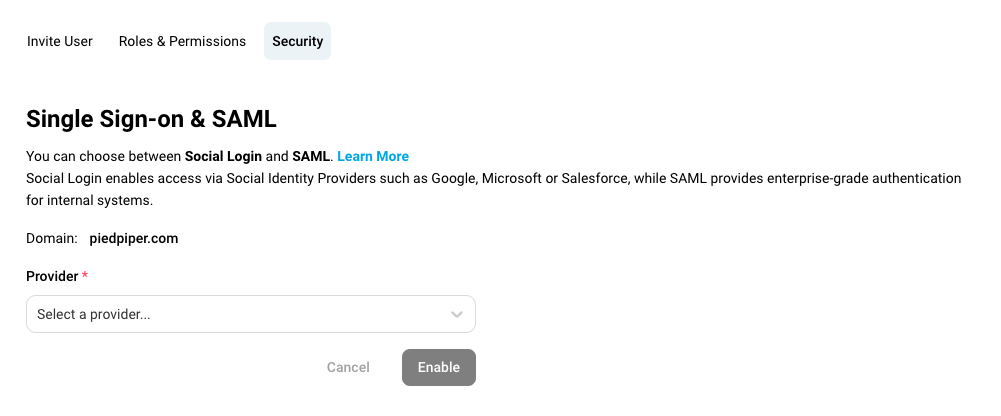Understanding: Single sign-on and SAML
Single Sign-On and SAML
At Dreamdata, we provide two types of SSO integrations to meet your organization's authentication requirements: Social Login and SAML-based authentication. Both options can be configured directly within the Dreamdata App via self-service and will apply to all users logging in with an email address from your primary domain.
SSO Options Available with Dreamdata
1. Social Login Providers
Social Login Providers allow users to authenticate using credentials from popular social platforms. Dreamdata supports the following providers:
- Microsoft
- Salesforce
This option is especially useful for businesses with smaller teams or when social logins are already part of your organization’s workflow.
2. SAML-based Providers
SAML is a widely adopted protocol for enterprise-level authentication. SAML enables seamless integration with your organization's identity provider, ensuring high-level security and scalability.
Dreamdata supports several SAML providers, including:
- Okta
- Entra (formerly Azure)
- OneLogin
- JumpCloud
- Duo
- Rippling
- Other SAML
SAML is ideal for larger organizations with strict security and compliance requirements.
How to Set Up Social Login or SAML in Dreamdata

Setting up SSO or SAML is a straightforward process and can be done entirely through the Dreamdata App:
- Navigate to the Accounts menu in the lower left corner.
- Select “User Management” and the “Security” tab.
- From here you can choose your preferred authentication method and complete the setup.
Whether you're looking for simplicity with Social Login Identity Providers or advanced security with SAML, Dreamdata offers flexible options to meet your authentication needs.
